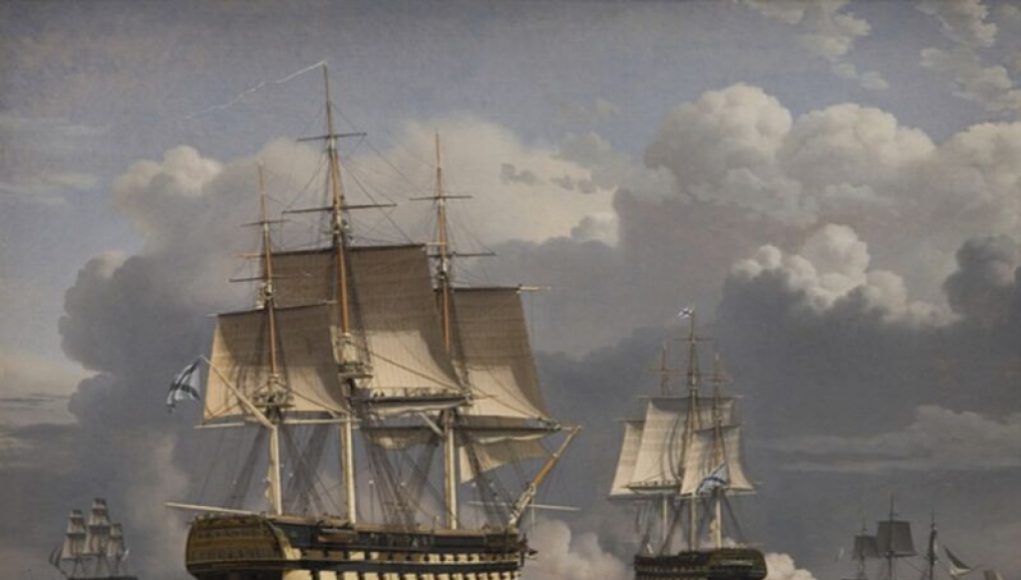Discovering the secrets behind historical paintings is crucial for conservation efforts, and a recent study published in Science Advances has revealed that artists during the Danish Golden Age used beer byproducts from local breweries to prime their canvases. This is just one example of the many analytical techniques that have emerged over the years to create “historical molecular records” of the culture in which various artworks were created. By studying the microbial species that congregate on works of art, scientists hope to find new ways to slow down the deterioration of priceless aging art.
In fact, researchers have already used a third-generation sequencing method known as Nanopore to analyze the microbes found on seven of Leonardo da Vinci’s drawings in 2020. They found that each drawing had its own unique microbiome, which could provide valuable insights into the materials and techniques used by the artist. And just last month, researchers examined mysterious black stains on a folio of Leonardo’s Codex Atlanticus and confirmed the presence of starch and vinyl glues in the affected areas.
Mass spectrometry-based proteomics is a relatively new technique that can provide a thorough and detailed characterization of any protein residues present in a given sample, as well as any accumulated damage. This technique is so sensitive that less sample material is needed compared to other methods, and it can characterize all proteins present in a sample, regardless of the complexity of the mixture. This is a significant advantage over other methods that are narrowly targeted to predefined proteins.
For their study, researchers selected 10 paintings from two artists prominent during the Danish Golden Age: Christoffer Wilhelm Eckersberg and his student Christen Schiellerup Købke. Their analysis included paintings produced in the 1820s and 1830s, when both were at the Royal Danish Academy of Fine Arts. By comparing canvases that were most likely prepared by the Academy’s craftsmen and those prepared outside the institution, the researchers were able to gain valuable insights into the materials and techniques used by these artists.
The 18th century saw Denmark become a key player in the global art scene. This period, known as the Danish Golden Age , saw a flourishing of creative energies and the emergence of various topical genres including landscapes, portraits, and everyday scenes. During this time, the artists of Denmark upped their game when it comes to preparing canvases for painting. Much like how later artists frequently used chalk to prime their surfaces, members of the Danish Golden Age resorted to a liquid obtained from beer byproducts.
For centuries, painters have strived to perfect a medium that produces excellent results both in terms of longevity and aesthetic appeal. The use of a primer, initially composed of animal products such as egg whites, was long established before substances entered the mix. One popular composite during the time of the Danish Golden Age was animal glue obtained from beer byproducts. This element frequently contained gelatin, an animal byproduct that offers numerous advantages when used in a painting context. It considerably improved adhesion and provided satisfactory grounds for pigments and thinnings. That’s why so many artists in and around Copenhagen, especially prominent painters like Christoffer Wilhelm Eckersberg and Anna Ancher, opted to start with this technique before applying the paint.
Generally speaking, the method worked on a predictable basis – the surface was dampened, covered with a thin layer of glue, and then coated with an additional thinly spread mixture. This was usually composed of the glue and light fine powder commonly mixed with a healthy dose of raw linseed oil, depending on the desired effect.
The use of glue as a canvas primer is widely attributed to German painter Albrecht Durer, considered the father of all the great painters of the Renaissance. He was the first to popularize the use of the glue in his works. His success prompted numerous other painters from the period to apply the technique as well, including Danish ones. In fact, the use of beer byproducts lingered for some years after Durer’s own experiments.
Today, the craftsmanship of Danish Golden Age artists is widely regarded as remarkable. The use of beer byproducts as canvas primers speaks of their ingenuity and willingness to embrace a diverse set of materials, which are largely of natural origin. Not only did it ensure a stronger base and stronger colours, it also preserved the paintings and their features for centuries. This speaks to the skill and durable materials these artists used when crafting their canvases.




















